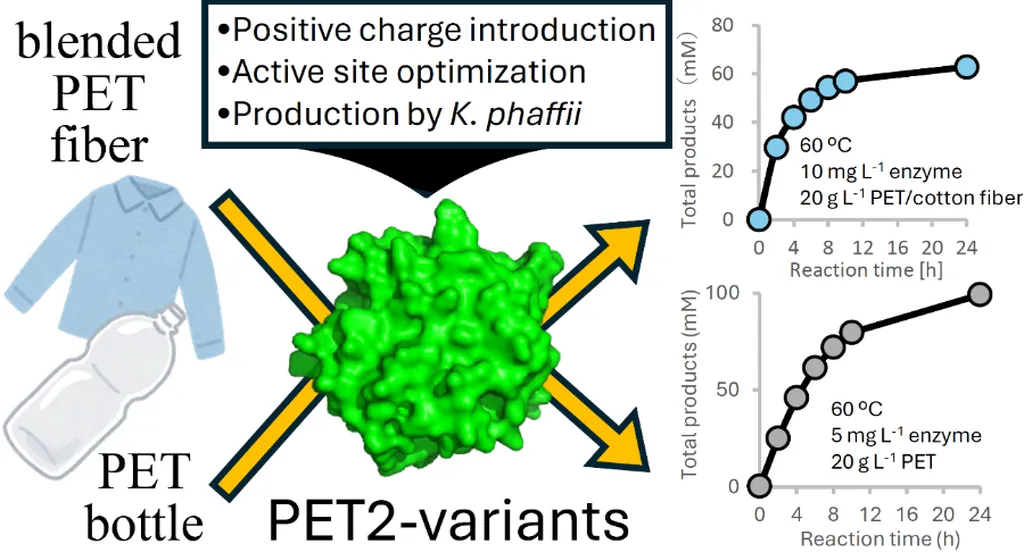In the quest for sustainable solutions to plastic waste, a groundbreaking study led by Nathania Puspitasari from the Department of Chemical Engineering at Widya Mandala Surabaya Catholic University has introduced a novel method to accelerate the biodegradation of polyethylene terephthalate (PET) fibers. Published in the Indonesian Journal of Chemistry, the research presents a promising approach to enhancing the efficiency of PET recycling, a critical need for the energy and waste management sectors.
PET, a widely used polymer in packaging and textiles, poses significant environmental challenges due to its slow degradation rate. Puspitasari’s team tackled this issue by genetically fusing hydrolyzing enzymes, such as cutinase and PETase, with a surface-active protein called hydrophobin HGFI. This fusion aims to improve the enzyme’s binding affinity to PET, a crucial factor given PET’s hydrophobic nature.
“The fusion of HGFI to PETase showed excellent performance for enhancing the binding affinity of the enzyme on PET fiber substrate,” Puspitasari explained. “This is due to the increasing number of self-assembled hydrophobin interactions that modify the PET surface to be more hydrophilic.”
The researchers also employed cellulose binding domains (CBD) as a solubility enhancer tag for the PETase fusion protein, addressing the insoluble characteristics of both HGFI and PETase. The fusion proteins, CBD-HGFI-PETase and HGFI-Cut_2, were constructed with a flexible linker, expressed in Escherichia coli, and purified by chromatography.
The results were promising: PETase fusion exhibited a 2.5-fold higher concentration of monomer products released compared to cutinase fusion after just five days of hydrolysis. This enhanced efficiency could revolutionize the recycling process, making it more viable and cost-effective for industrial applications.
The implications for the energy sector are substantial. Efficient PET recycling aligns with the principles of a circular economy, reducing the need for virgin plastic production and minimizing waste. This, in turn, lowers energy consumption and greenhouse gas emissions associated with plastic manufacturing.
Puspitasari’s research, published in the Indonesian Journal of Chemistry (translated as “Jurnal Kimia Indonesia”), opens new avenues for developing more effective and environmentally friendly recycling methods. As the world grapples with the mounting plastic waste crisis, such innovations are crucial for shaping a sustainable future.
This study not only highlights the potential of genetic engineering in enhancing enzymatic activity but also underscores the importance of interdisciplinary collaboration in addressing global environmental challenges. The fusion protein approach could pave the way for future developments in biodegradable materials and waste management technologies, offering a beacon of hope in the fight against plastic pollution.

